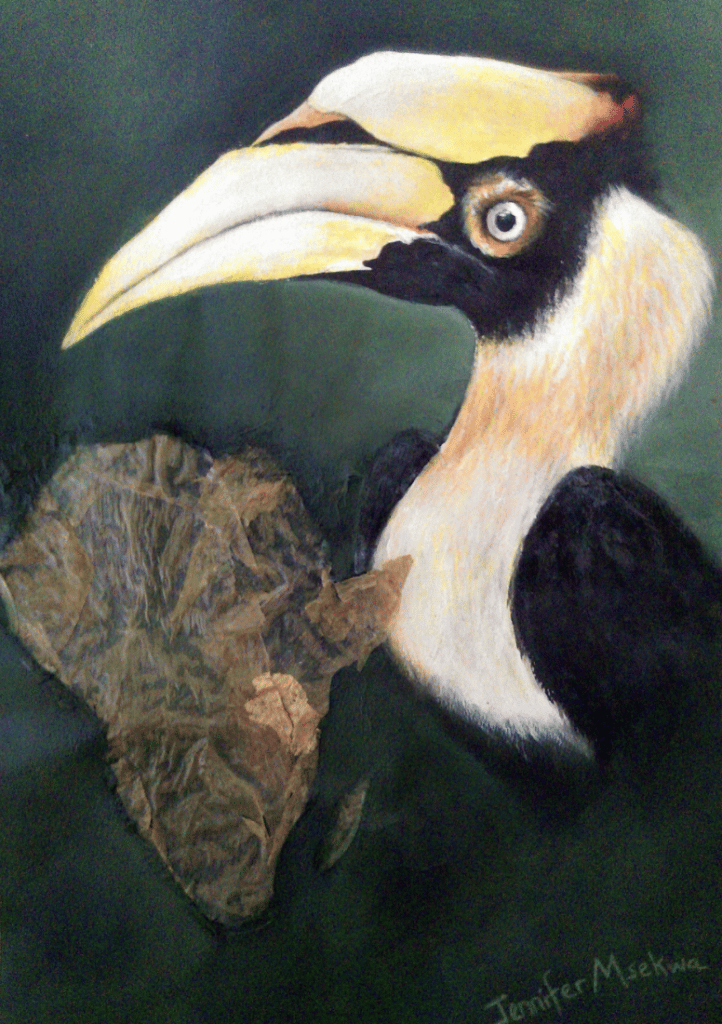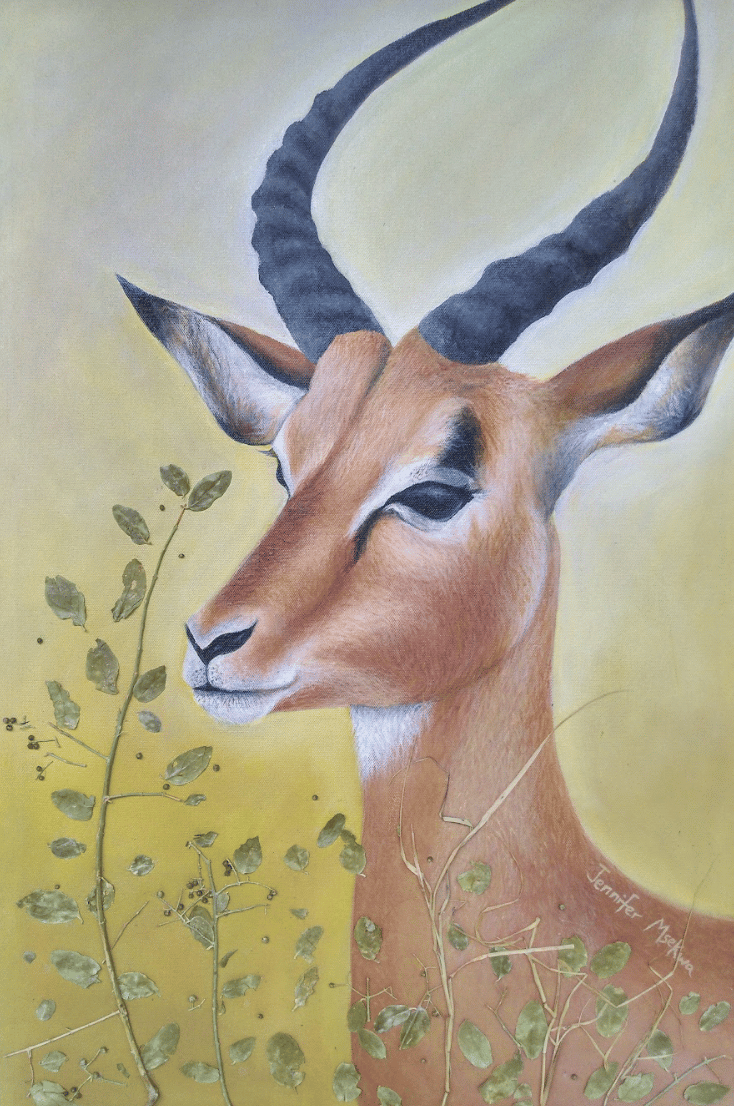Jennifer - Documenting the undocumented artist
Our Documenting the undocumented exhibition is a collaboration of Tanzanian artists to represent the Hadzabe and Datoga tribes. We want to shed light on the indigenous tribes, something that has not been done by Tanzanian creatives. This is an opportunity for creatives to promote their crafts, stories, and entrepreneurial spirit. We want to be the contributors to their narratives.
During this project, we collaborated with 4 creatives ( Ammal, Beatrice, Jennifer and Shija), who exhibited their work in an online exhibition in partnership with Emergent Art Space.
Trailer videos by Take2Studios: Photography by Bill Marwa; Videography by Anna Kishimbo
Sisiedako (Commiphora Africana )

My artwork aims to show how natural resources available in the Hadzabe community enable them in their daily social activities. It helps to dispel negative perceptions of the African continent that seem not to have enough resources to facilitate daily life needs, especially the basic ones.
The Hadzabe community is a good example that shows how natural resources can sustain human life since the tribe depends on nature for almost 100%. In my research, I found out that the Hadzabe are self-sufficient in the field of herbal medicines and use natural remedies found in their areas.
I have regarded the Commiphora Africana plant as one of the most important herbs used by the Hadzabe in various ways such as medicine, skincare (natural sunscreen) and many other uses. This plant in Hadzabe’s native language is called “Sisiedako “.
The hornbill bird is one of the important birds in the Hadzabe community; after hunting the bird for food, they preserve the mouth and quills. The mouth is used as the tool used for crafting accessories, and they sell these accessories to visitors who come to their area, helping them to buy water from a remote area during the dry season. The Hadzabe use the quills for making arrows. I have attached materials from the Commiphora Africana plant I found in the Hadzabe land during the research tour to emphasise the concept.
The impala

The impala has a significant role in the Hadzabe and Datooga communities and it also helps the environment. Although a popular animal worldwide, the Hadzabe community’s view of the impala is more precious as it has a significant purpose that many are unaware of. I discovered, for example, that the Hadzabe women use the skin of the impala as sanitary pads during menstruation. They use the impala’s skin because it is soft compared to skins from other animals. The dry season has water shortages, and so they also use the impala’s skin to help them save water as the pads are not washed by water but exposed to the sun after use in order to dry them. After drying they wipe it by hand and they are ready to be used again.
As a visual artist who is also an environmental activist, I made sure that my research was based on the natural resources available in the Hadzabe areas and to find out how nature and the environments, in general, enrich their lives in all aspects. I found this technique unique but also I realised that the use of this kind of pad does not harm the environment as much as the modern ones do since it is eco friendly.
The impala is also one of the larger animals selected to be given as a dowry paid to women, as well as a good source of food in the tribe of Hadzabe. The impala also helps the Hadzabe to use the skin from the animal as a financial alternative of exchanging items with the Datooga tribe as barter trade.
The impala’s skin is one among various skins the Hadzabe use for doing barter trade with the Datooga tribe where the Datoogas use the skin to make clothes for women (only the women from the Datooga tribe wear these clothes). The toothbrush plant or scientifically “Salvadora Percica ” is among the plants that the women collect berries from. This plant is highlighted among many other plants from the tribe because they don’t eat its fruits until they get permission from the Chief.
Jennifer's reflections
This project was a good opportunity to learn something new and, as an environmentalist, I was happy to learn of the eco-friendly alternatives they have. For instance, how the Hadza women use antelope skin as menstrual pads and the Datogas use calabash materials as household utensils; these were such creative alternatives instead of plastics.
I really loved the use of natural remedies and their environment-based lifestyle that make the indigenous communities very healthy. The experience helped me see how life was before the technological changes. It was a great opportunity to learn and add knowledge as an artist and environmentalist.
Jennifer's Bio

Jennifer is a visual artist based in Dar es Salaam. She has loved art from an early age. Images fascinated her to the point where she decided to practice drawing them, referencing the drawings she got from books found at home. Drawing became her hobby for many years and was later inspired to be a visual artist.
Jennifer enjoys creating collages done only by natural materials. This style is derived from her childhood; growing up in a home where people loved and cared for nature and the environment, which changed her perspective and appreciation for plants, living things, and the environment in general.
Her love and attention towards nature and the environment grew and she decided to be an environmental activist through her art. Just as the environment enables humans to survive/live while engaging in various social activities, so her work addresses various social issues while emphasizing environmental stewardship and preservation at the same time.
Jennifer considers art as an important means of learning, changing negative attitudes into positive, motivating, informing, criticizing, and even a way of performing revolutions without verbal communication or physical resistance.
Exhibition History
Email Jennifer: juliascip@gmail.com
Follow her on Instagram: @jenniferandarts
